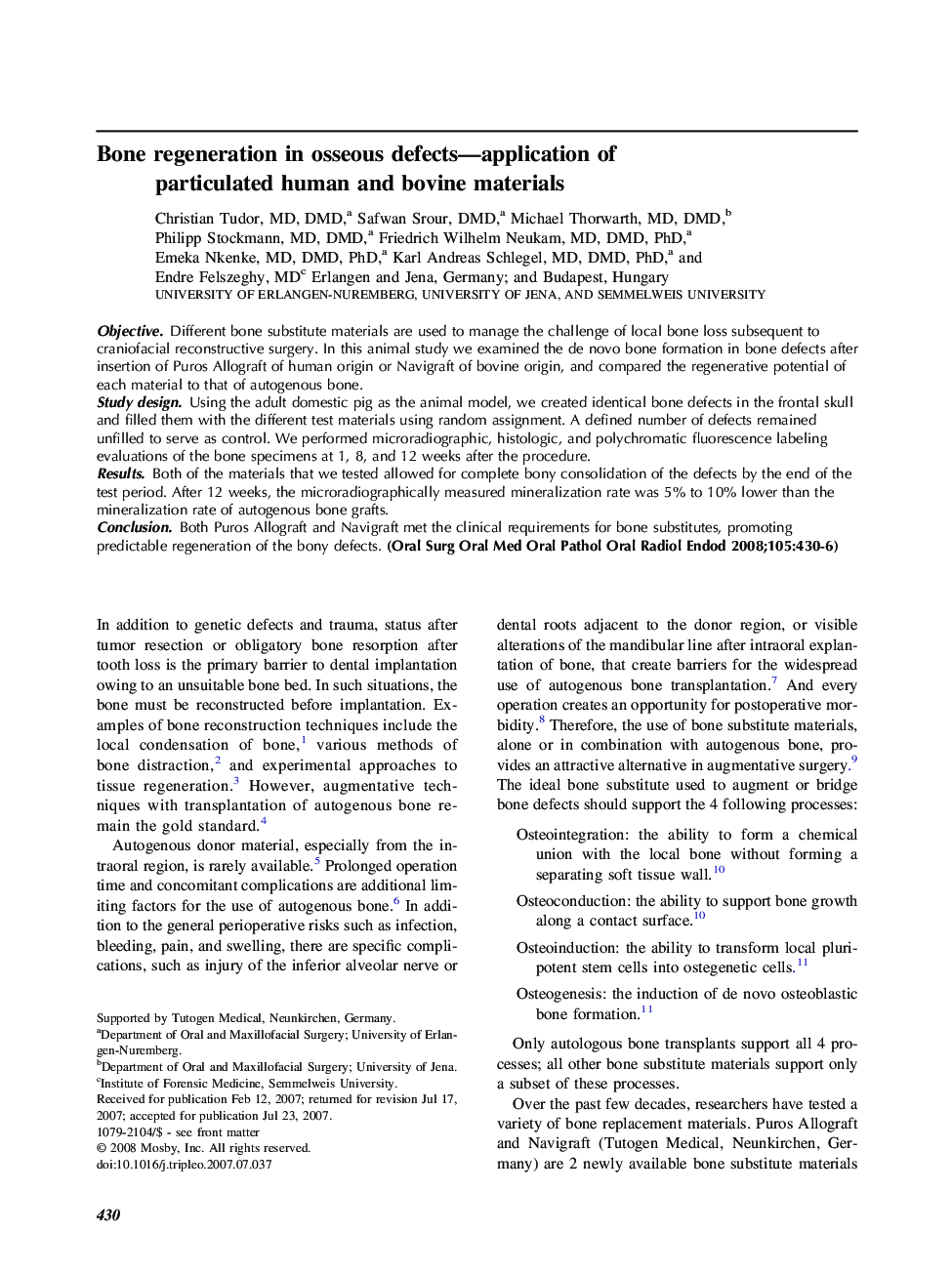| Article ID | Journal | Published Year | Pages | File Type |
|---|---|---|---|---|
| 3168799 | Oral Surgery, Oral Medicine, Oral Pathology, Oral Radiology, and Endodontology | 2008 | 7 Pages |
ObjectiveDifferent bone substitute materials are used to manage the challenge of local bone loss subsequent to craniofacial reconstructive surgery. In this animal study we examined the de novo bone formation in bone defects after insertion of Puros Allograft of human origin or Navigraft of bovine origin, and compared the regenerative potential of each material to that of autogenous bone.Study designUsing the adult domestic pig as the animal model, we created identical bone defects in the frontal skull and filled them with the different test materials using random assignment. A defined number of defects remained unfilled to serve as control. We performed microradiographic, histologic, and polychromatic fluorescence labeling evaluations of the bone specimens at 1, 8, and 12 weeks after the procedure.ResultsBoth of the materials that we tested allowed for complete bony consolidation of the defects by the end of the test period. After 12 weeks, the microradiographically measured mineralization rate was 5% to 10% lower than the mineralization rate of autogenous bone grafts.ConclusionBoth Puros Allograft and Navigraft met the clinical requirements for bone substitutes, promoting predictable regeneration of the bony defects.
